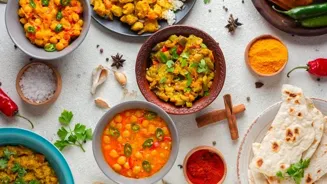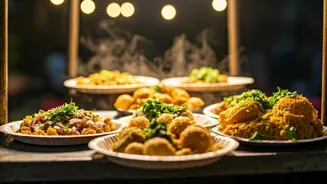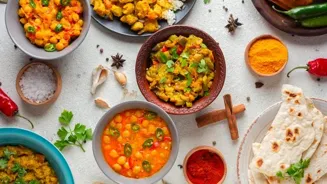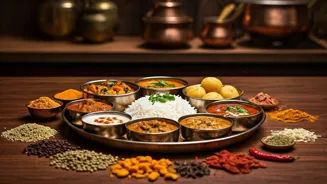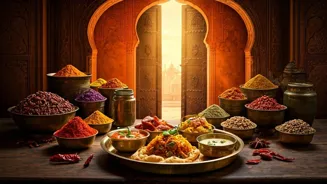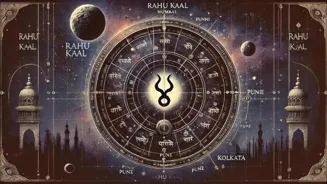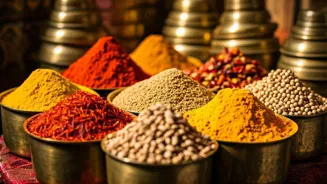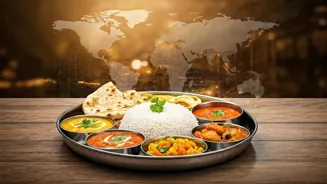Uncover the Origins of Chaat: From Imperial Kitchens to Modern Gastronomy. Dive into the rich history of this beloved Indian street food
Chaat, the very word brings a tingle to the taste buds, doesn't it?
It's more than just a snack; it's an emotion, a memory, a burst of flavours that defines the Indian street food experience.
From the bustling lanes of Delhi to the sophisticated restaurants in Mumbai, chaat has traversed a long and delicious journey. But have you ever wondered about the origins of this beloved culinary delight?
Let's embark on a flavourful exploration of chaat's history, from its humble beginnings to its present-day gourmet avatar.
The birth of chaat during Mughal era to combat illness
The story of chaat is often traced back to the Mughal era, specifically to the kitchens of Emperor Shah Jahan. When a Yamuna river illness spread thru out India, it was a order that the water supply should be improved. Then the emperor sought a dish to strengthen his army from these health issues.
The dish needed to be spicy and full of flavour to combat the impure water. And that is how chaat was born! While the exact recipe remains a mystery, it's believed to have been a concoction of ingredients designed to both tantalize the taste buds and provide some form of immunity.
Imagine a dish made with healthy and delicious ingredients to avoid illness. The initial versions were very basic, made with readily available ingredients.
Lucknow birthplace of chaat, from royal kitchens to street food staple
Lucknow, the city of Nawabs, is often credited as the birthplace of chaat as we know it today. It was in the royal kitchens of Lucknow that chaat began to evolve from a simple dish into a culinary art form.
The cooks and chefs experimented with different combinations of spices, chutneys, and textures to create a symphony of flavours. The 'chaatwalas' or street vendors, then took this royal creation to the streets and made it accessible to everyone.
They adapted the recipes to local tastes and ingredients, adding their own unique twists and interpretations. This is how chaat transformed from a royal delicacy to a street food staple. After that the chaat dish evolved, and different styles came in the Indian platter.
Regional chaat variations showcase diverse flavors and textures
As chaat travelled across the country, it adapted to regional tastes and preferences. Every region developed its own unique style of chaat, using local ingredients and spices. For instance, in Delhi, you'll find the 'aloo tikki' chaat, featuring crispy potato patties topped with chutneys and yogurt.
In Mumbai, 'bhel puri' reigns supreme, a tantalizing mix of puffed rice, sev, and chutneys. Kolkata boasts 'phuchka,' a spicy and tangy water-filled puri. Each chaat style is a reflection of the region's culinary heritage and the creativity of its cooks.
Despite the variations, the essence of chaat remains the same: a delightful explosion of flavours and textures. A symphony of sweet, spicy, tangy, and crunchy. This what makes a plate full of chaat so famous and tasty.
Generational chaat vendors preserve tradition with secret recipes
The humble chaatwala on the street corner has been the heart and soul of the chaat culture in India. It is passed on from previous ancestral. These skilled vendors perfected the art of crafting the chaat that is liked by everyone so it could suit their preferences.
They have known their customers for several years. Using fresh ingredients, they would create an array of chaat options, each crafted with love. Most chaatwalas have a secret recipe that has passed on from previous generation to generation.
With their expertise and dedication, they have maintained this chaat tradition for many years.
Chaat evolves from street food to gourmet delight
Today, chaat has gone beyond the streets and found its way into gourmet restaurants. Chefs are experimenting with creative variations of this classic snack, using exotic ingredients and modern culinary techniques. From deconstructed chaats to chaat-inspired desserts, the possibilities are endless.
These gourmet versions of chaat often elevate the presentation, using innovative plating techniques to create visually stunning dishes. While the gourmet chaat is certainly a luxurious experience with the different tastes, they remind of the humble beginnings of a famous food.
It's a testament to the enduring appeal of this beloved snack.
Chaat: a cultural symbol of unity and nostalgia in India
Chaat is more than just a food item; it is ingrained into the culture, which reflects the diversity of India. It brings people together, creating a sense of coming together when enjoying it on the street.
It's a reminder of simpler times, nostalgic memories of childhood evenings and family gatherings where the main food item was plate full of chaat. It is a very important part of the food culture.
With its delicious flavours and amazing ability to adapt, chaat will continue to tantalize taste buds for many years to come. From a humble snack made to keep illnesses away to a global delicacy loved by all, the history of chaat is as flavourful and interesting as the dish itself.
AI Generated Content. Glance/InMobi shall have no liability for the content